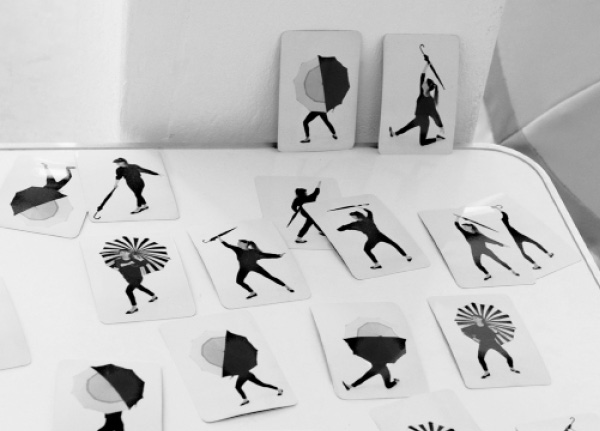
REFORM
first performed on August 24, 2017
Helsinki Night of the Arts, Helsinki, Finland
performed twice in 2017
BERNADETTE WOLBRING
Elizabeth Ward, Kaisa Kukkonen
Stockholm, Sweden / Stuttgart, Germany
bernadettewolbring.com
REFORM
BERNADETTE WOLBRING
“Reform” is a feminist interpretation of data visualization techniques, a manifestation of resistance to power through design principles, and an exploration of dance as an emancipatory practice. “Reform” revolves around statistics related to the gender pension gap. At the center of this project, I use umbrellas to depict the data as abstract patterns; they are activated in public space through choreography based on Bartitsu, a self-defense technique with umbrella. It was practiced by Sir Arthur Conan Doyle’s character Sherlock Holmes, and was developed between 1898-1902 in the UK by Edward William Barton-Wright.
The first part of “Reform” is called “Yksi, Kaksi, Kolme, Nelja” (one, two, three, four in Finnish) and was a collaboration with contact improviser Kaisa Kukkonen (FI). In this choreography, Bartitsu poses progressively merge into fluid movements, which are finally passed on to the audience in a public rehearsal. The performance’s second part, “Social Body,” was created in collaboration with ballet dancer Elizabeth Ward (US/AT). Umbrellas turn into abstract representations of the individual and society, and help to visualize our behavior patterns within it. A cluster of umbrellas come to life as one body, lifting and lowering its chest as if it were alive and breathing.
To teach the choreography in workshops, a set of educational material was developed: a method kit consisting of 24 cards, a pull-down chart, as well as a drone video. After stops in Vienna (Museumsquarter) and Zurich (Corner College), the project was developed further as a participatory project in a community center in Helsinki (co-produced by m-cult/CAPP).
The project was triggered by a Huffington Post article stating that “in Switzerland, women will soon receive higher pensions,” which referred to the proposal to reduce the current pension gap of 37.1% by a corrective factor of 8% as part of a referendum in September 2017 to reform the Swiss pension system. However, the Swiss National Council rejected this adjustment and the corrective factor has not become part of the reform package. “Reform” supports the initial proposal for the referendum, sparks discussions on the issue and, ultimately, tries to end gender inequality.
“Reform” is part of an artistic practice interested in the political potential of abstraction. Here, abstraction is not only used to help understand complex correlations, but also to mimic codes that are used to claim scientific authority, and, ultimately, to demonstrate alternative aesthetics that allow for a more open reading (“queer abstraction”).